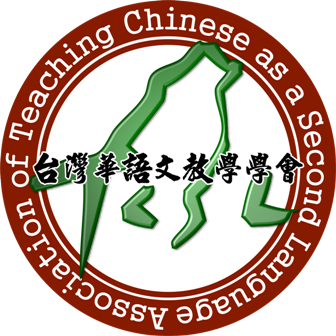目錄
Table of Contents
- 對外漢語聲調教學之現狀與教學法 刑志群
Tone Pedagogy and Acquisition in Teaching Chinese as a Foreign Language by Janet Zhiqun Xing
- 摘要
本文通過對比分析漢語語音的特點,以及前人對漢語聲調和語調教學的研究結果,探討對外漢語聲調教學,特別是對英漢語之聲調教學之教學法。結果表明漢語內部的聲調和語調的干擾以及學生母語的干擾是造成他們學習漢語聲調困惑的兩個主要原因。根據這種情況,筆者提出聲調和語調互動的教學法,並且通過教學實踐演示、說明在教學中只有強調片語的聲調和語調的互動,學生才能真正掌握、學好漢語的聲調。
This study investigates the current popular methodologies used for teaching Chinese tones to non-native speakers, particularly English native speakers. Contrastive analysis is used to show that the difficulty in acquiring Chinese tones arises from two types of interference: interference between tones and intonations, and interference between Chinese intonations and those of the students’ native language. Evidence from this study suggests that the best way to help students learn tones is to teach phrasal / sentential tones and intonation, rather than individual tones.
- 詞義成分在TCSL的分析與應用-從「吃麥當勞」談起 許長謨
Semantic Components and Their Analysis and Application in TCSL-Taking “Eating McDonald’s” as an Example by Chang-Mo Hsu
- 摘要
語言中的語義問題常依附在語音或構詞語法中呈現,形成語言的結構關係(Structuralism)。對外華語教學的學習者多屬成年的外國人,溝通時比較重視語義的正確性。由於學習者的音韻、語法能力薄淺,直接影響到對語(詞)義的領會,而其隨機或積蓄而迸發的語義問題往往或因跳脫教學者母語的構詞與語用習性,致教學者措手不及;或因平日習焉不察的問題在教學當場提問,而使教師難以第一時間回應。因此,華語教師須有一定的認知。在詞義的基本分析時,音韻問題一確立,就須直接面對構詞或語法的橫向組合(Syntagmatic)關係,先由上下語境(Co-text)確立語感的正確度,再縱向的嘗試其他的聚合(Paradigmatic)關係,以確認相似詞的正確度。後設檢驗中,符號學三角形(Triangle of Semiology)中「Word(Symbol)- Thought(Concept)- Thing(Referent)」的遞延關係是個分析原則。但在延伸應用或舉例時,使用語意成分(Semantic Components)的析離及上下義位的檢竅,或傳統語義學同義詞或反義詞等觀念做對比來檢驗語義的合宜度,都可以增進教學時對華語詞義的確認。本論文意圖利用幾個實際有效的角度,以實際教學為例,探討語義學(Semantics)的分析與應用。由於範圍過大,因此擬從「我們去吃麥當勞」一句漸漸通行的話語談起,舉用引出相關的教學原理,進以語義學理論論析如何輔助對外華語之教學。
Problems with semantics are often related to phonetic and syntactic issues, and reveal the nature of the structure of language. Most learners of Chinese as a second language are foreign adults, for whom accurate meaning is very important, but whose insufficient phonological and syntactic competence obstructs comprehension. However, their semantics-related questions during class are often impossible for teachers to answer using only their native speaker intuition. As a result, common but easily-missed problems frequently baffle first-time instructors. Therefore, an effective Chinese language teacher should possess some understanding of semantics.At the basic level of semantic analysis, once phonological problems are established, the cross-sectional syntagmatic relationship between morphology and syntax must be directly confronted. First, context must be used to determine the accuracy of one’s language intuition, and then other paradigmatic relationships must be tested longitudinally to confirm the accuracy of similar words. The ”Word (Symbol) – Thought (Concept) – Thing (Referent)” relationship of the Triangle of Semiology is an important analytical principle for attaining a proper understanding. However, while extending its application, we must use semantic components to examine the hyponymy, or the synonyms, polysemy and antonyms in classical semantics, and compare the appropriate usage. This can enhance the effectiveness of Chinese teaching.This paper attempts to use pedagogy as an example, and from several realistic perspectives explores the analysis and application of semantics. In order to narrow the scope of this study, we begin with the example sentence ”Eating McDonald’s” to elicit relevant pedagogical principles, and expound on ways for semantic theories to support the teaching of Chinese as a foreign language.
- 漢語動詞「生」的語意發展 曹逢甫、 陳菘霖
The Semantic Development of the Chinese Verb “Sheng” by Feng-Fu Tsao and Sung-Lin Chen
- 摘要
本文從「以人體為本」和SUMO知識本體架構,歸結出動詞「生1」(亦即人類傳宗接代)始於人類自身的經驗行為,從語意核心開始呈現「幅射結構」的發展分作三條路徑:藉著隱喻機制映射到動物、植物、事態或事件的出現,「生1」的語意逐步泛化為「生2」(植物的出生、事態的發生)。再從「生1」的生殖模式,引申為「活著」即「生3」;人類的生殖模式從熟悉的母體到外在世界,可以表示對於事件的主體(人、事、物)呈現不了解、不熟悉的程度即「生4」。
This article analyzes the Chinese verb ”sheng” by using the concept of embodied cognition, and utilizing the SUMO ontology framework. The results show that the semantic core of sheng, the verb sheng 1, refers to human reproduction and therefore originates from human behavior. From this core the word developed in three main directions. Sheng 2 developed through metaphorical generalization to refer to the birth of animals or plants, or the beginning of an event. Sheng 3 developed the meaning ”to be alive” through sheng 1’s meaning of reproduction. Finally, sheng 4, which expresses a person or thing’s lack of understanding of or unfamiliarity with another person, place or situation, developed from the concept of leaving a mother’s womb and entering an unfamiliar world.
- 華語近義詞辨識難易度與學習策略初探 蔡美智
Preliminary Study on Strategies for Learning Near-Synonyms in TCSL by Mei-Chih Tsai
- 摘要
學習第二語言到了中高級階段,語言表達準確與否關鍵不再是語法,而是詞彙。祖人植(1999)考察中高級階段華語詞彙偏誤,發現主要難點在於近義混淆,偏誤情形以動詞為最,名詞、形容詞次之。本文針對這三個詞類,外加副詞,探討相關近義詞群難以辨識的原因。研究方法採問卷調查,首先比對近義詞詞典揀選詞群,參照近義詞工具書所附說明和練習題製作問卷;其次發放就讀中高級華語課程的外籍生作答,回收後統計偏誤率,藉以評量詞群難易度:進而檢視說明內容和答題表現,確認學習難點,探討相關學習策略和教學策略。
Language learning at intermediate or high levels is mainly a matter of mastering vocabulary. According to Zu (1999), the use of near-synonyms is a major problem for learners at these levels. This study uses questionnaires to test how well intermediate and advanced CSL students can distinguish synonymous verbs, nouns, adjectives and adverbs. The error frequency in these questionnaires is used to evaluate the difficulty of distinguishing pairs of synonyms. Learning and teaching strategies are also discussed.
- 漢語的動詞刪略句與英漢對比分析 魏廷冀
VP-ellipsis in Mandarin Chinese: A Comparative Analysis by Ting-Chi Wei
- 摘要
本文解析漢語動詞刪略句之焦點結構,從而理解漢語動詞刪略結構的訊息本質;更進一步從英漢對比分析的角度,比對英漢動詞刪略句之異同。我們不僅釐清了漢語動詞刪略句之焦點結構外,也針對英漢動詞刪略句的指涉及類型,作了清楚的比較,期望有助於了解此兩種語言動詞刪略句的基本差異,並冀望在華語教學上有所啟發。
This paper analyzes the focus structure of sentences with verb phrase ellipsis in Mandarin Chinese, and also contrasts ellipsis in English and Mandarin Chinese. Some pedagogical suggestions on the instruction of Mandarin VP-ellipsis are offered on the basis of these findings.
- 華語拒絕請求的策略分析:語體與語境的作用 謝佳玲
An Analysis of Strategies for Refusing Requests in Chinese: Stylistic an Contextual Factors by Chia-Ling Hsieh
- 摘要
本研究根據真實的請求情境歸納華語的拒絕模式,詮釋在特定語體與語境變因作用下之運作特徵。語料來自台灣大學生與研究助理的對話內容,溝通媒介包括電話與電郵;拒絕標的包括勞心與勞力請求。結果指出,拒絕行為一般包含意圖明確的拒絕與阻因兩個成分,在電話中出現順序不定,偶以迂迴策略取代;在電郵中偏好先說明阻因再拒絕,並搭配更多道謝與道歉的禮貌策略。兩種語料的差異反映媒介的特性,電話接近口語語體;電郵接近書面語體。請求類型亦影響拒絕模式,內在阻因多用以拒絕勞心的請求;外在阻因拒絕勞力的請求,可見拒絕行為與請求標的有其相依性。結論顯示語言、語體與語境的互動,並為語用分析與華語教學的聯繫提供例證。
This study classifies Chinese refusals and examines their usage in particular styles and contexts. The refusals examined were in response to real-life request. The language data is drawn from telephone and email conversations between Taiwanese university students and research assistants. The results show that refusals tend to be explicit, and consist of a refusal and an impeding factor. In refusals made over the telephone these two components do not appear in a fixed order, and are occasionally replaced by indirect refusal strategies. In email the impeding factor often precedes the refusal, and politeness strategies such as gratitude and apology appear more often. These differences reflect the contrast between the styles of spoken and written communication. The nature of the request also affects the refusal. Internal impeding factors are often given in response to requests involving mental labor, while external impeding factors are given in response to requests that involve physical labor. The study’s conclusion explains the interaction between language, style and context, and provides examples that link pragmatic analysis and Chinese language teaching.
